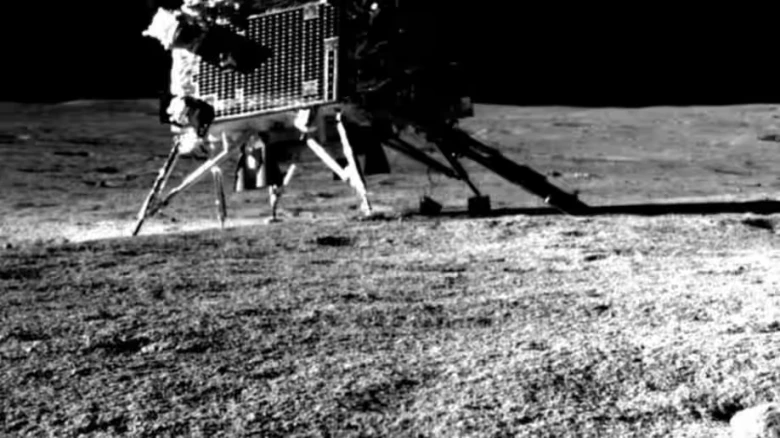Regional

The Vikram Lander, named in honor of Dr. Vikram A. Sarabhai, a pioneer in India's space program, was designed to operate for...
Digital Desk: The Indian Space Research Organisation (ISRO) has achieved yet another milestone in its illustrious space exploration journey as it announced today that the Vikram lander of the Chandrayaan-3 mission has been placed into sleep mode. This remarkable development comes on the heels of Vikram's exceptional performance, exceeding its mission objectives by making a second soft landing on the moon's surface as part of an ambitious 'hop experiment.'
The historic event unfolded at approximately 8 a.m. IST on Monday, September 4, 2023, marking a momentous occasion in India's space exploration endeavors. ISRO shared images of the Vikram lander before and after the successful hop experiment, showcasing the spacecraft's impressive capabilities.
In a tweet posted on the official ISRO X (formerly known as Twitter) account, the organization stated, "Chandrayaan-3 Mission: Vikram Lander is set into sleep mode around 08:00 Hrs. IST today. Prior to that, in-situ experiments by ChaSTE, RAMBHA-LP and ILSA payloads are performed at the new location. The data collected is received at the Earth. Payloads are now switched off. Lander receivers are kept ON. Vikram will fall asleep next to Pragyan once the solar power is depleted and the battery is drained. Hoping for their awakening, around September 22, 2023. "
The term "in-situ" refers to conducting experiments directly at the location of interest without the need to transport samples or specimens elsewhere. This approach provides unfiltered insights into the lunar environment, allowing scientists to gather invaluable data about the moon's surface.
The Vikram Lander, named in honor of Dr. Vikram A. Sarabhai, a pioneer in India's space program, was designed to operate for one lunar day, equivalent to approximately 14 Earth days. It has exceeded its expected operational duration, thanks to the successful 'hop experiment' and data collection from in-situ experiments.
The data collected during these experiments has been transmitted back to Earth, playing a pivotal role in achieving the primary mission objective of locating lunar water. The presence of water on the moon holds significant implications for future lunar exploration and potential colonization.
Following the completion of these critical operations, the lander's payloads have been deactivated, while the lander receivers remain operational. The Pragyan Rover, which accompanied the Vikram Lander, has also been placed into sleep mode. Both the lander and the rover will remain in this state until they can recharge their onboard batteries using solar power.
The eagerly anticipated recharging of the Vikram Lander and Pragyan Rover is expected to occur around September 22, 2023, coinciding with the lunar sunrise over the South Pole. This moment will mark a new phase in the mission, allowing the spacecraft to resume their scientific explorations and data collection.
The success of the Chandrayaan-3 mission solidifies India's position as a prominent player in the field of space exploration. India now joins the ranks of nations like the United States, China, and Russia as the fourth country to land on Earth's lunar satellite and the first to successfully land a spacecraft on the unexplored South Pole of the moon.
As the world awaits the reawakening of the Vikram Lander and Pragyan Rover, the Chandrayaan-3 mission stands as a testament to India's unwavering commitment to pushing the boundaries of space exploration and scientific discovery. The journey to unlock the mysteries of the moon continues, with India leading the way.
Leave A Comment